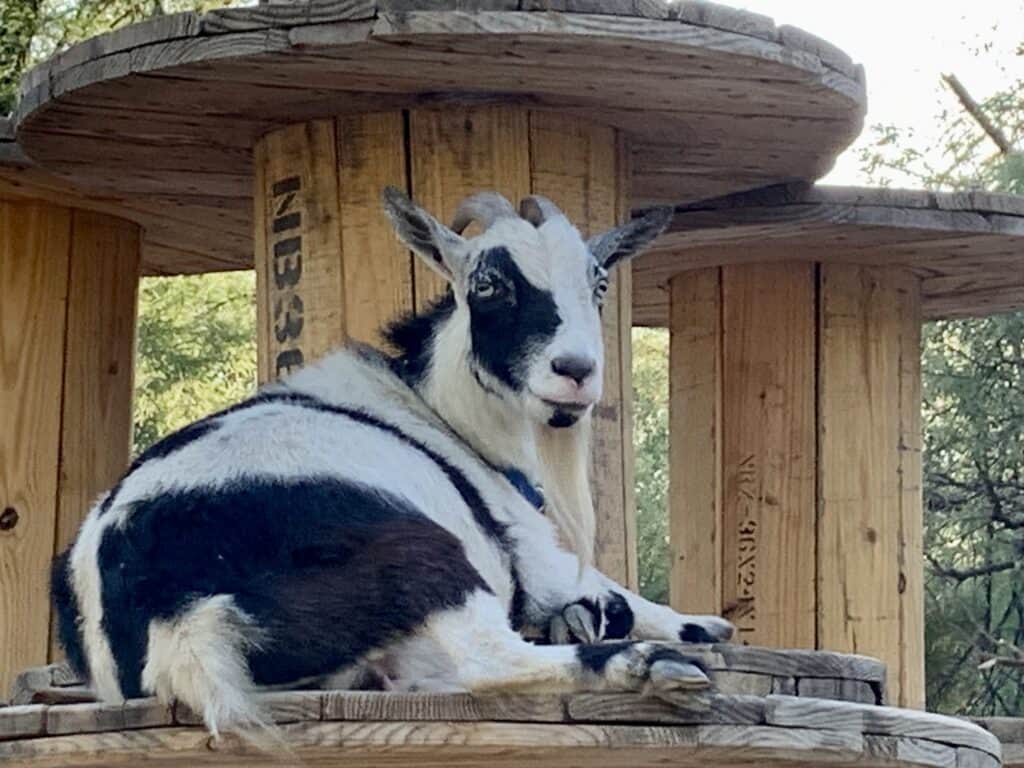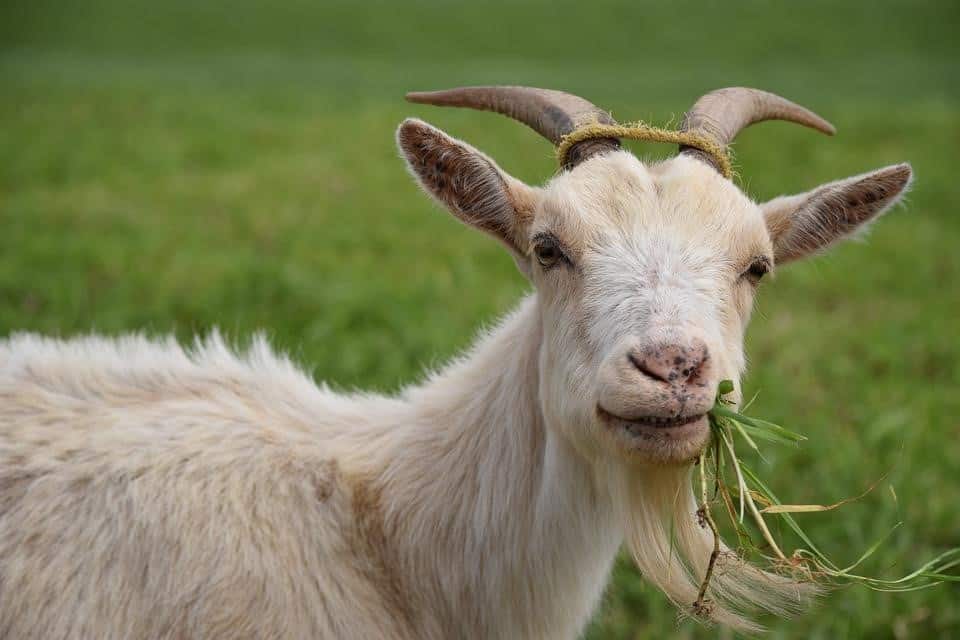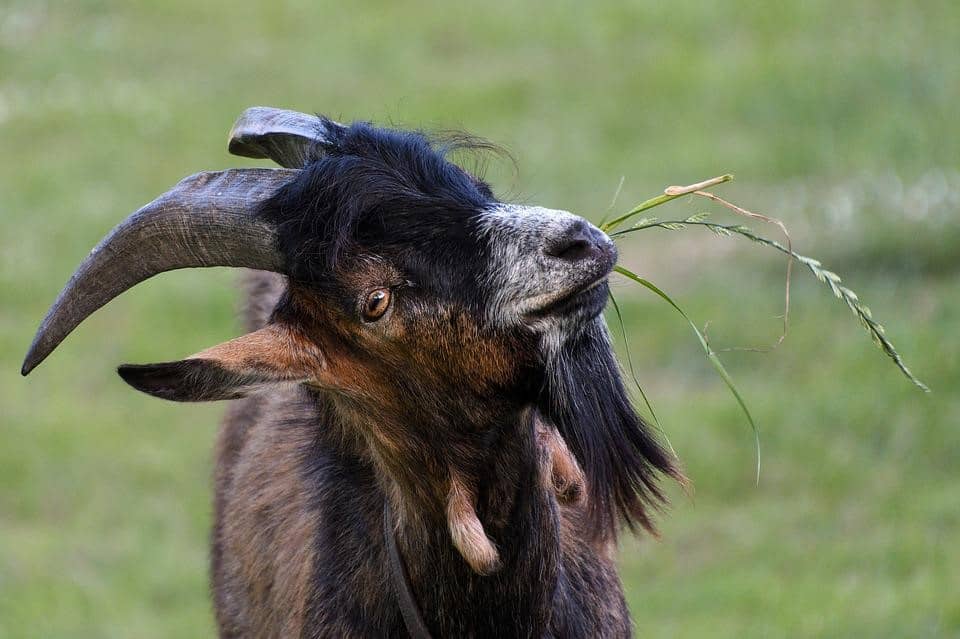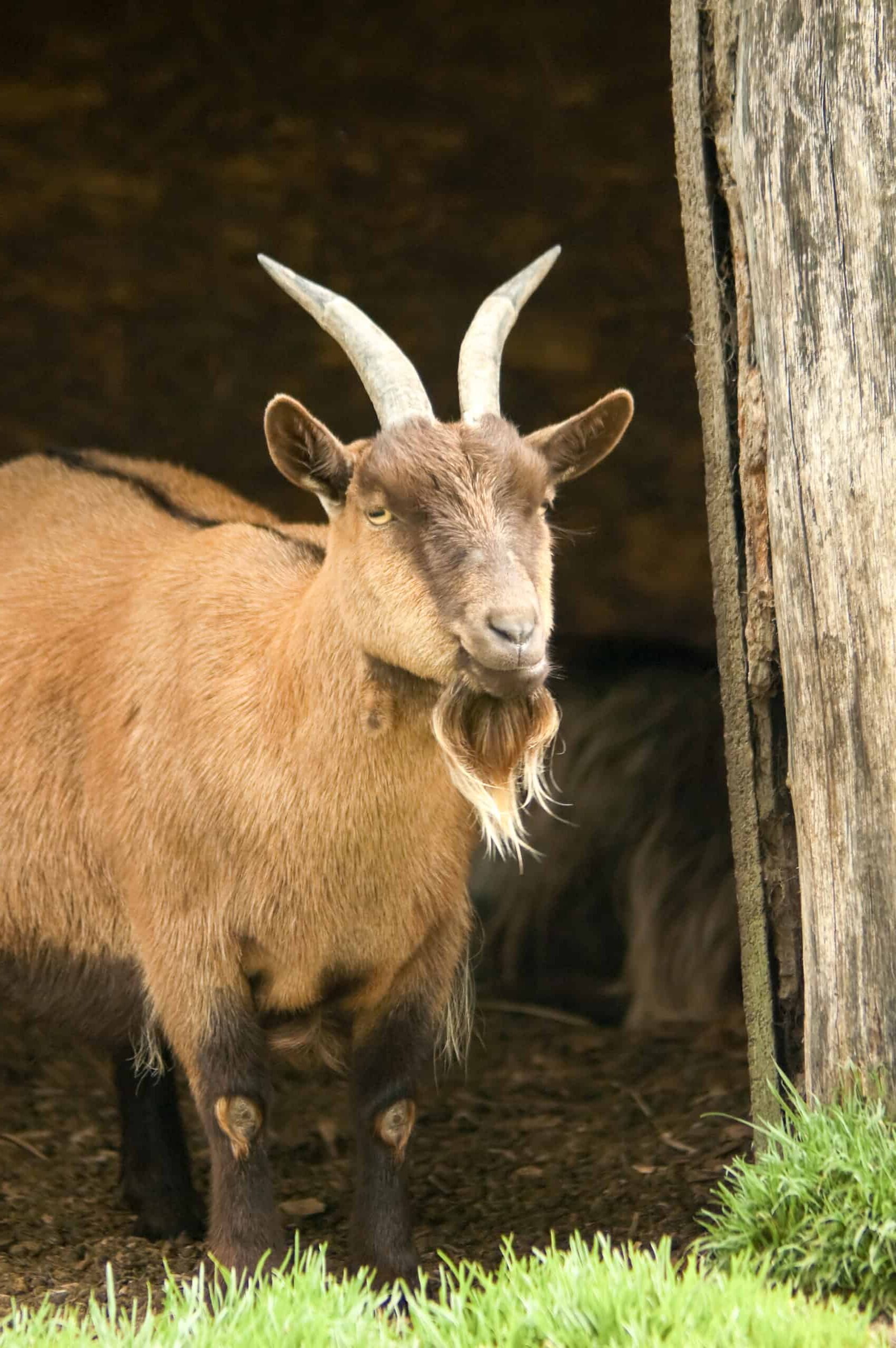There are a few pertinent questions that anyone looking to raise goats needs to ask themselves. One of the most important ones is how much space do goats need? This is also known as the stocking rate or herd density for goats. While there are some adorably miniature goat breeds, such as the Pygmy goats and Nigerian dwarf goats, all goats need enough space and land to browse and play.
For your goats to thrive, they need pasture and as much open space as you can give them. Here we explain how much space goats need and what you can do to make their lives more comfortable. Remember, goats are social animals. It’s best to raise at least two or more at a time.
How Much Space Do Goats Need
How much space your goats need and how many goats per acre will depend on many factors. You will need to know whether you are planning on housing the herd on a pasture where they will primarily graze for food, or if you will be housing them in a more enclosed space where you feed them on a daily basis. The most common factors to consider in either case include:
- The goat breed/size
- How many goats do you intend to have
- Whether the goats are going to be kept indoors or outdoors or a mixture of the two
As a goat keeper, you have your own personal reasons for raising goats. Whether you are keeping them for their meat, milk production, or as pets, the constant is that these animals need space to roam without having to compete for food, water, or shelter.
Raising Goats in More Confined Spaces
As a rule of thumb, one adult goat needs approximately:
- 10 – 15 square feet (indoor space)
- 25-30 square feet (outdoor space – when being fed on a daily basis)
Keep in mind, this number multiplies for each goat. If you are unable to keep your herd on a pasture, and you are confined to a smaller space, you will need shelter for the goats (indoor space) and a fenced in area outside (outdoor space). Ideally the goats will be able to roam in and out as they please.
The kind and amount of space you provide your goats will affect their ability to have easy access to shelter, eat properly, and maintain good health. Ideally, goats need enough space to eat without aggressive competition and to stretch out comfortably to rest. If there are too many goats in a small space, you may find some goats can not compete with the others and will fall behind in nutrition and health.

Adding an area for them to play is important if you are able to make room for it. A goat playground will help them stay active, foster communication, and help establish the hierarchy among the goats. Providing areas for the goats to jump and play will enrich their minds and keep them busy and content to help promote positive behaviors vs destructive ones.
The indoor space you provide for your goats needs to be well-ventilated to prevent toxic air build up and the spread of disease. Both the indoor and outdoor space must also be as dry as possible to prevent diseases such as hoof rot. Keeping goats dry will also help keep goats warm in the winter and comfortable in the summer. Areas that stay wet can lead to the growth of parasites which could infect your herd. Your goats might develop health complications, especially when goats are pregnant or young. You might find that a space will stay wetter longer if the space they have is too cramped.
How Much Space Do Goats Need in a Barn
The general rule of thumb is that a single goat needs at least 10 square feet of space in a barn. This is particularly true if the goats will be spending a prolonged period within the shelter. If they are not able to go outside because of weather or other occurrences, you may need to double the amount of space. However, if the goats have enough roaming space outside and only need the barn to sleep, you could get away with providing smaller spaces.
Of course, just how much space exactly is determined by several factors. One of the key factors is the breed/size of goat. Another factor to consider, if you are breeding goats, is the number of pregnant does. Pregnant goats tend to need more space as their pregnancies progress.
This is mostly because they tend to distance themselves from other goats the nearer they get to giving birth to baby goats. They will try to choose areas where they know their offspring will be safe from the rest of the herd and have adequate shelter.
If you want some inspiration and some DIY ideas, check out these goat barn ideas which take many factors into consideration.
Raising Goats on Pasture
In an ideal world, backyard goats would spend their days foraging for food on pasture. Deciding your stocking rate on pasture depends greatly on the land you have. The type and amount of vegetation, as well as the drainage, play large roles in the calculation. Remember, you want to keep the area the goats live on as dry as you can (while allowing plants to grow), but you also need to consider the ability of plants to grow when it is too wet. Ground that is too wet will not foster as many healthy plants, and as the goats walk through it, they will stomp it down and prevent new growth. Land that is habitually wet has the ability foster different types of parasites that can be detrimental to your herd.
Keeping 6 – 8 goats per productive acre will give goats enough space for a varied diet that they need to develop good health. It also helps keep them in shape and allows them to socialize extensively. At this range, each goat can have enough space. If you find the goats are eating through the vegetation too quickly, you may need to lower the density of your herd or consider rotational grazing if you have the space.

How Much Space Do Goats Need in Pasture
In their natural state, goats prefer free-range foraging. Goats have been known to forage far and wide as this not only allows them to have a variety in terms of food, from grass to grain, but it also allows them to exercise and keep their minds stimulated.
However, as a goat owner, the amount of land you might have to dedicate to pasture may be limited. You must take special care, not to overstock pastures.
Ideally, you will need about an acre for every 6-8 goats. This will allow the land to sustainably produce most of the forage that your goats need. Goats consume 3-4% of their body weight a day of forage. This means, for an adult goat weighing 60 lbs will need around 2.5 lbs of forage in one day. Closely monitor and often test your pasture for amount and quality of feed. If the pasture is not growing enough quality vegetation to sustain your herd, you may need to add hay to their diet to meet their intake needs.
How many goats you can keep in that pasture will depend on how well the particular piece of land performs in terms of pasture production. This is often affected by factors such as:
- Soil fertility
- Prevailing climate
- Season
- Quality of pasture browsing opportunities
In many cases, you will find that you might need to buy additional hay to cater to the goats when the land can’t produce enough pasture. If you go this route, it’s important to remember that goats need about 2-4% of their body weight in forage a day.
When it comes to this, it’s important to have a conversation with your local cooperative extension officer to get a good idea of the typical stocking rate in your specific region.
Space Needed if You Are Raising Goats for Brush Control
However, if you are interested in keeping goats as a way to primarily control woody areas and brush control, the number of goats required per acre is higher. This is because your goal is not to maintain a pasture, but to over-graze the pasture to lessen the amount of vegetation.
How Much Space Does Each Goat Need at the Hay Bunk
If you are deciding to feed your goats daily instead of relying on a pasture, you will need to determine how large of a hay feeder you need, or how many goats can use the hay feeder you have. Whether you are dealing with meat goats such as Boer goats or a milking herd, the story is often the same—competition for feed is intensified when the feed is spread out in limited spaces such as hay bunks. This is where you need to take the most care since your goats might spend a lot of time at these feeders.
Technically speaking, how much space each goat needs at the hay feeder ranges greatly. In many cases, you can get away with providing 1 to 2 feet of feeder space between each goat, provided the conditions are favorable. If hay is available 24/7, the goats will typically not all eat at the same time. This is ideal for the function of the goats digestive system. However, if that is not an option, you will need more space for each goat if they are all eating at once.
The issue with providing such limited space is that goats have a social hierarchy, and, in many cases, lower-ranking goats might have difficulty feeding at the same time as higher-ranking goats.

If you have enough hay and you make it available throughout the day, then these lower-ranking goats will get a chance to feed once the higher-ranking ones leave the hay rack. If not, they might go hungry, eventually affecting their size and health and how long goats live.
Factors that Will Affect How Much Space Your Goats Need
As you can imagine, not every farmer has the space to keep all the farm animals they want. That’s one of the main reasons why most farmers pick and choose what livestock can keep. If you keep goats, some factors will determine just how much space you can and should give them. These include:
- Your ideal goals (How many goats do you want to keep?)
- The type of goats you want to keep (Are you looking to keep meat goats, pet goats, or a milking herd?)
- Prevailing weather (This will determine how much time the goats will need to spend inside)
- Access to large tracts of pasture
- Quality of the field, farmland, pasture
It’s important to remember that the more space you provide for your goats to browse and graze, the more you protect them from parasites. Rotating pasture for goats ensures they don’t fall victim to the same parasites all year round.
That being said, this guide gives you a rough idea or estimate of how much space goats need. Consider the figures highlighted here as the minimum requirements for goats on your property. More acreage and space is always better.

